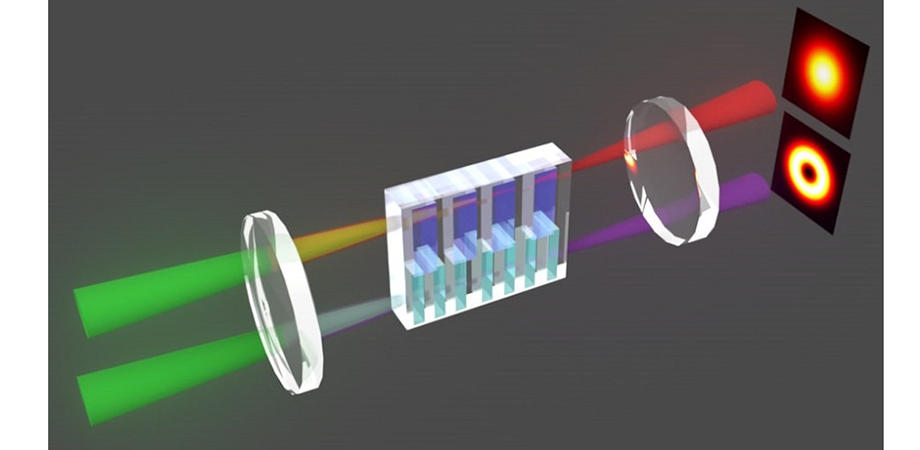Multidimensional, dual-channel vortex beam generator

Optical vortices, characterized by a helical phase front and doughnut-shaped intensity distribution, contribute to a broad range of applications, from microscopy to optical communications. And applications for optical vortices are proliferating. So, what's the best way to generate optical vortices? Active, direct emission from a laser cavity is considered one of the best approaches. For applications in quantum optics and super-resolution imaging, a laser source capable of generating vortices over a wide spectral range is essential.
Optical parametric oscillators (OPOs) can generate broadband tunable radiation from UV to infrared. Among OPOs, those pumped from femtosecond fiber lasers provide tunable ultrafast pulses with formidable performance: high repetition rate, high output power, and broad wavelength coverage. As it turns out, femtosecond OPOs are also the best way to generate wavelength-tunable optical vortices.
Dual-beam-mode OPO, two channels
Minglie Hu of the Ultrafast Laser Laboratory at Tianjin University notes that while a single-channel vortex beam generator can offer data transmission capacity and trapping capability to obtain tunable terahertz radiation, dual-channel generators have that ability, plus the advantage of generating two different types of beams for a broader range of applications. "Two mutually incoherent sources with one Gaussian beam and one vortex beam could break the Rayleigh diffraction limit, which can be applied for super-resolution imaging, so a two-channel vortex beam generator is most desirable," says Hu.
Hu and his team recently developed a two-channel, dual-pumped OPO configuration capable of providing dual-wavelength, dual-beam modes tunable across the telecommunications band. Related research results are reported in Advanced Photonics.
They achieve dual-wavelength operation by stimulating two adjacent periods of a periodically poled lithium niobate crystal in an ytterbium-doped fiber laser setup. The structure ensures that two independently tunable pairs of signals can synchronize with the pump and oscillate simultaneously.

Schematic illustration of the dual-channel, dual-beam-mode OPO experimental setup.
The OPO cavity configuration can be divided into two channels: one for generating Gaussian beams and the other for generating a variety of vortex beams. Hu explains, "Vortex beams with different orders are created by replacing the q-plate." Hu notes the q-plate is sufficiently thin so that any dispersion introduced is negligible. The resultant OPO generates two signals tunable over 1520–1613 nm and 1490–1549 nm, respectively.
Hu and his team hope that the proposed method with its simple, economical cavity design will offer a convenient way to generate optical vortices in dual-beam-mode. They anticipate that it may provide a platform for super-resolution imaging, nonlinear optics, multidimensional quantum entanglement, and more.

Beam profiles of the experimental output.
Read the original open access letter by Jintao Fan, Jun Zhao, Liping Shi, Na Xiao, and Minglie Hu: "Two-channel, dual-beam-mode, wavelength-tunable femtosecond optical parametric oscillator," Adv. Photon. 2(4), 045001 (2020) doi: 10.1117/1.AP.2.4.045001.
| Enjoy this article? Get similar news in your inbox |
|



